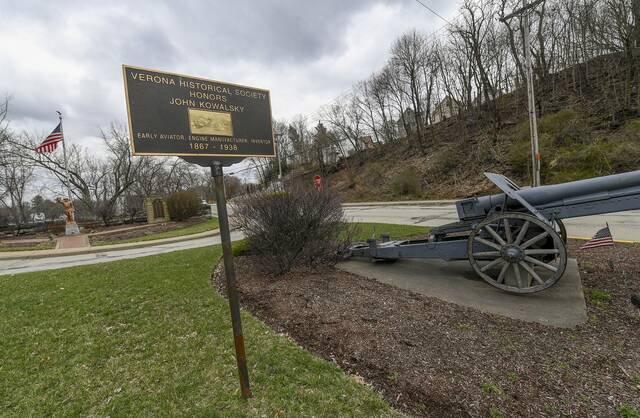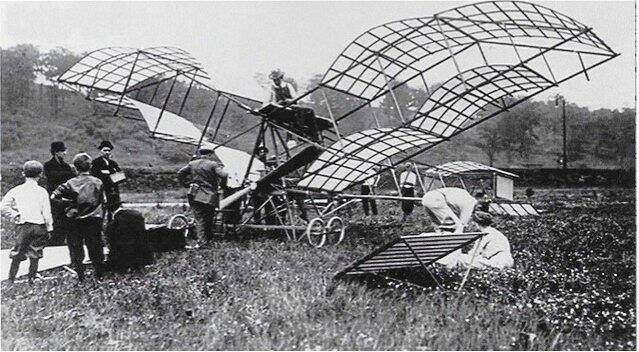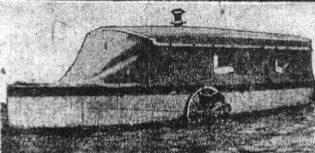Remember When: Verona inventor was ahead of the curve on land, sea and air in early 1900s
The Alle-Kiski Valley has been blessed with great inventors over the years.
Among them is Natrona’s Samuel Kier, inventor of the oil-based lamps that illuminated homes and businesses before the incandescent light bulb came along.
Another was New Kensington’s Stephanie Kwolek, a chemist at DuPont who invented Kevlar, the material used in bulletproof vests.
Then there’s John Kowalsky, a brilliant inventor in the early 20th century. Born in Wisconsin’s Buffalo County in 1867, he moved to Verona in the 1890s and set up a machine shop where he worked on designing and building gasoline engines and electric motors.
Included in Kowalsky’s works was an amphibious vehicle, able to travel on land like a car and also on water like a boat — a predecessor of the crafts used in “Duck” tours as tourist attractions.
He also was working on a “flying machine” at the same time the Wright Brothers were getting their first plane off the ground at Kitty Hawk. Kowalsky also built a motorboat that reached more than 30 mph along the Allegheny River, interfering with barges and other commerce of the era.
But two key ingredients for the success of an inventor — luck and financial backing — were so sorely lacking with Kowalsky that he died penniless and without family or friends.
In the air
His first plane was a large, bird-like structure that failed to get off the ground. His second plane was bi-winged with a 52-horsepower engine with a tricycle landing gear. It took off from Montrose Hill in O’Hara, across the river from Verona. It ascended 50 feet before crashing into a tree.
Kowalsky fixed the steering mechanism and experienced a successful flight over the river, thrilling onlookers. On June 7, 1911, Kowalsky was ready to unveil his flying machine on Neville Island outside of Pittsburgh. As he tested his vehicle, a storm with strong winds and heavy rain smashed his plane to pieces.
Kowalsky then teamed with Theodore Stockman of Punxsutawney for an eight-cylinder plane with 80 horsepower built by Kowalsky Motor Works. After a successful Labor Day flight before 8,000 people, Kowalsky wanted to fly from Tarentum to Schenley Park. On takeoff, the plane hit a trench and damaged a propeller.
Undaunted, and with Stockman at the controls, Kowalsky set up another flight. It was marred by a gust of wind. It crashed, but Stockman survived.
On land and water
In 1912, the Kowalsky Duck, shaped like a car in front and a boat in the back, made a successful trip by land and river from Pittsburgh to St. Louis. Gary Rogers of the Oakmont Historical Society chronicled the journey in his book “Tales of Our Towns.”
Kowalsky had hoped to sell the “Duck,” capable of carrying 30 passengers, to the U.S. Army, but that never materialized.
Kowalsky also developed the world’s smallest engine, about the size of a pencil eraser, along with furniture pieces and clocks.
The later years
Lacking business acumen, Kowalsky fell on hard times as he got older. He sold his motor works to Oakmont Motorboat Company. He broke up with his wife and hired himself out as a local handyman.
In 1935, Kowalsky was sent to Woodville State Hospital after neighbors reported he was “acting childish.” The Allegheny County Sheriff’s Department boarded up his workshop. He died on Nov. 10, 1940, at Woodville, with no one to claim his body.
A group of businessmen from Verona brought him back to the town, and he was buried in a potter’s grave at St. Joseph’s Cemetery.
In 2010, through the efforts of Donald and Rhoda Worf and the Verona Historical Society, a community monument was dedicated to Kowalsky near the edge of town.
George Guido is a Tribune-Review contributing writer.
Remove the ads from your TribLIVE reading experience but still support the journalists who create the content with TribLIVE Ad-Free.



